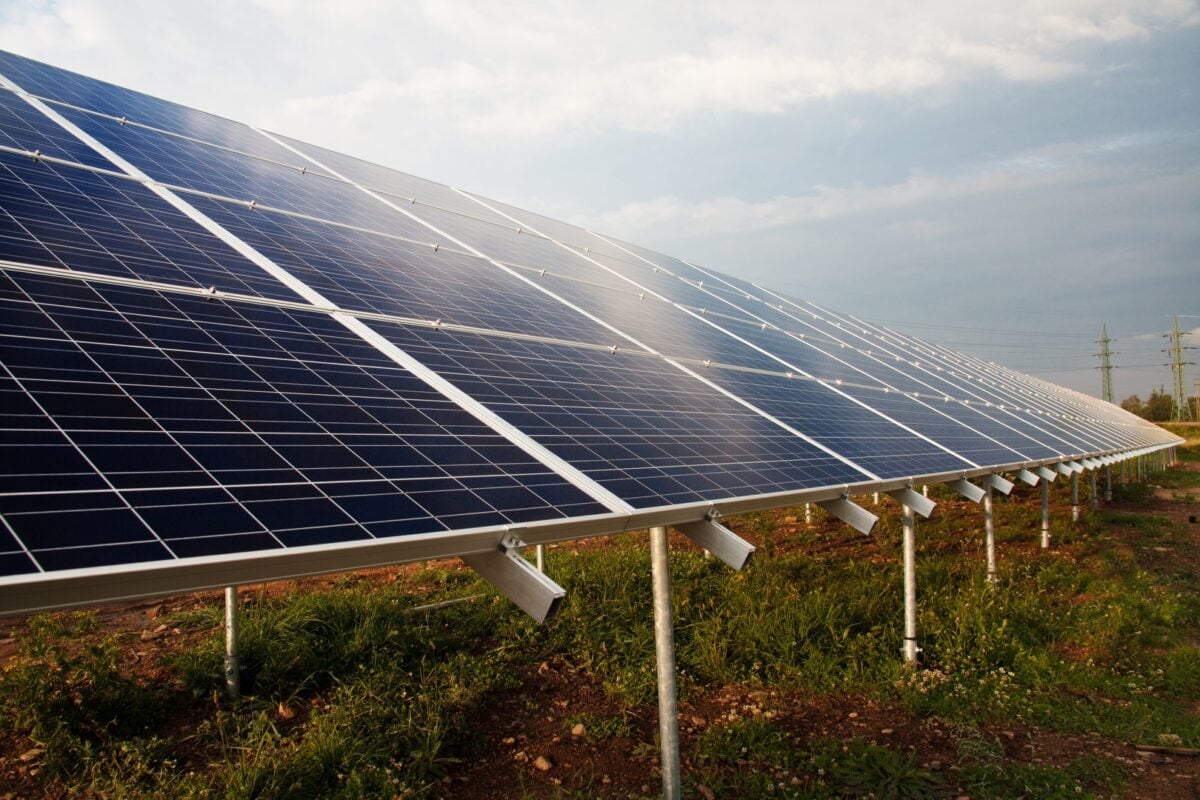
The government needs to “go even further with enabling measures” such as public sector PPAs in order to accelerate solar deployment to help meet net zero.
This is according to RenewableUK, which released a new report exploring its vision of the changes the energy system will need to undergo to meet net zero by 2050.
The report cited forecasting from the Solar Trade Association which predicted in a high ambition scenario a total operational capacity of 27GW of solar by 2030, assuming the reinstatement of Pot One technologies in the Contracts for Difference scheme, as well as a strong PPA market and reforms for business rates. Whilst RenewableUK's report praised the reinstatement, which it said would “undoubtedly bolster the development pipeline”, it warned the government will “need to go even further with enabling measures” to accelerate deployment in the medium to long term.
This would include measures such as public sector PPAs and support for solar and storage within the Home Upgrades Grant Scheme to finance domestic retrofits.
Distribution grid upgrades will also be essential, RenewableUK said, in order to allow continued growth of distributed solar generation throughout the 2020s.
It will therefore be “crucial” for Ofgem and the distribution network operators (DNOs) to work collaboratively with the industry to create a “favourable policy environment”, as well as targeting grid upgrades strategically to enable the largest penetration of distributed generation assets possible.
The report also highlighted the role of energy storage in reaching net zero, stating it will be “vital” to the future functioning of the grid. However, it is “essential” that storage is able to deploy at scale across the country, RenewableUK said.
It therefore praised the exemption of storage from the Nationally Significant Infrastructure Project regime as a “step in the right direction”.
However, the arrival of hybrid technologies such as co-location “raises questions about the definitions used”. A more appropriate approach should therefore be developed, which would move away from the current classification of intermittent and non-intermittent generation.
RenewableUK also called for clarity on how changes currently being explored by the Energy Networks Association would work in practice by 2025. The changes would enable storage projects to progress up the connection queues to connect earlier, and mean that storage capacity providing a flexible alternative to network reinforcement would be able to speed the connection process for other projects as well.
“This is an incredibly exciting time for the energy sector,” RenewableUK’s chief economist, Marina Valls, said. “We’re entering an era of rapid technological change as we move closer towards total decarbonisation, using an even wider range of technologies such as renewable hydrogen alongside more wind, solar, battery storage and – crucially – people participating far more pro-actively in the way our modern energy system operates, making it more flexible.”
Other recommendations made in the report include government support for the deployment of offshore wind and floating wind, maintaining routes to market and certainty to support investment in cheap decentralised renewables and encouraging greater flexibility through increasing interconnection, vehicle-to-grid (V2G) technologies and industrial demand response.

